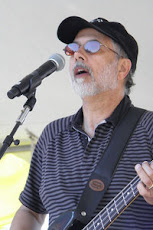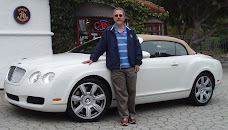 When Bea V. saw her brother-in-law’s Volvo 122S, she knew that she wanted one, too. So, she ordered a red 1966 model and picked it up, fresh off the boat from Sweden, on December 31, 1965. Three repaints and two engine rebuilds later, she’s still driving it.
When Bea V. saw her brother-in-law’s Volvo 122S, she knew that she wanted one, too. So, she ordered a red 1966 model and picked it up, fresh off the boat from Sweden, on December 31, 1965. Three repaints and two engine rebuilds later, she’s still driving it.“I didn’t shop around,” says Bea. “I had already made up my mind. It was the right size and I fit in it real well, too.”
The 122s is very much a car of its era, with rounded sides and tapered ends that culminate in single sealed beam headlights up front and oval taillamps in back—each rimmed in thick chrome. The tall, wide grille is split in the center and features a lightweight aluminum grid that wouldn’t look out of place on a contemporary Chevrolet. Though obviously old, it’s still handsome and beautifully proportioned.
Despite Bea’s affection for the car, which she named Old Red, she has not babied it, although she has always kept it garaged. For many years Old Red was a daily driver and it went on family vacations too.
“We took it everywhere back then,” Bea relates. “We used to pull a trailer to Washington and Oregon. It was a workhorse.”
More recently, she and her late husband, Ray, drove Old Red to car shows in Southern California and Oregon. Bea proudly showed me the certificate from when they won third place in the 120 Series Class in the 1999 Volvo Club of America National Meet.
No car goes forever without needing some work. After many years of loyal service, Old Red was running poorly and leaking oil, so Bea had the 1.8-liter four-cylinder engine rebuilt at 328,000 miles. The odometer broke long ago, but she figures the car must have gone a million or so miles by now.
Bea was kind enough to let me drive Old Red around town. As I opened the door and stepped in, I could smell the “old car aroma” of deteriorating cloth, rubber and vinyl and decades of oil and gas. It’s nothing like the antiseptic, perfect ambiance of a brand new 2009 car. I liked it right away—it brought back old memories.
I sat down on the firm bucket seat and checked the mirrors, which attach to the car on chrome holders as slim and graceful as a flower stem. The shallow dash panel is padded on top, with the lower half of red painted metal. How long since you’ve seen a metal dash? The original top pad cracked after many years of sun, so Bea had it replaced with an exact match.
The large, thin steering wheel features a chrome horn ring and a boomerang-shaped bar serving as the two spokes. “Volvo” appears on it in small script. A few simple knobs are mounted at the lower edge of the metal dash for the few basic functions a car of this era and price class would have—lights, wipers, and heater. A modest Bendix AM radio faces the front passenger.
I snapped on the seatbelt. Volvo was pioneer in offering automotive shoulder belts. These are loops of belt fabric through a heavy metal clasp that hooks onto a steel ring on the center tunnel. There is no retractor reel, so I had to make adjustments to fit it to me.
Old Red turned over easily with a twist of its tiny metal key. I spent some time and effort locating reverse using the long shift lever from the floor-mounted manual four-speed. The shift knob looked and felt like a small doorknob.
Once underway, the car goes easily with the flow of traffic, but it’s no rocket—nor does it need to be. I peered through the flat-glass slit of a windshield at the rounded hood of the car. With unassisted steering, you have a feeling of control while moving, but making turns at very low speeds is challenging. Bea, a petite, slim woman, apparently has no issues with that.
Despite being very different from the 2010 Toyota Prius I’d arrived in, the elderly Volvo felt both like a car should and also conveyed some of the directness that is lost in this age of electronic throttles, power steering, and hermetic sealing from the outside world.
The Volvo 122s arrived in America in the late 1950’s after a Swedish debut in 1956. It looked modern—for the mid-1950’s—and remained on sale in the U.S. as the bread-and-butter model of Volvo’s three-vehicle line, which included sedan and wagon versions of the 122s and old-fashioned 544 and the sporty, low-slung 1800s.
After a 10-year run, the by now dated-looking 122s gave way to the new, boxy 144 in 1966. That model, which was sold in various forms into the early 1990’s, is the car still associated with the brand, even as Volvo’s vehicles have changed and rounded over the last decade.
Last year, Old Red was part of a wedding. The best man and maid of honor got a special ride to the church, all because the young couple loved the 122s.
Just as Bea loves her car. “I’ll keep it forever,” she says.






3 comments:
Lovely story!
I miss my 84 Volvo 760!
mac
I loved reading about this!
Nice story Steve, I hope you enjoy test driving my 1965 Dodge Dart GT I named "Stellaaa" next week.
ElenaMartina
www.elenamartina.com
http://vintagevehiclevixen.wordpress.com
Post a Comment